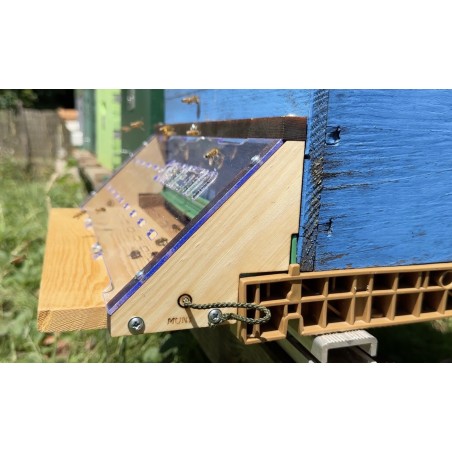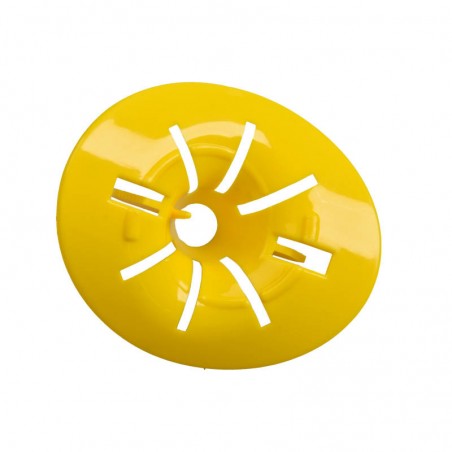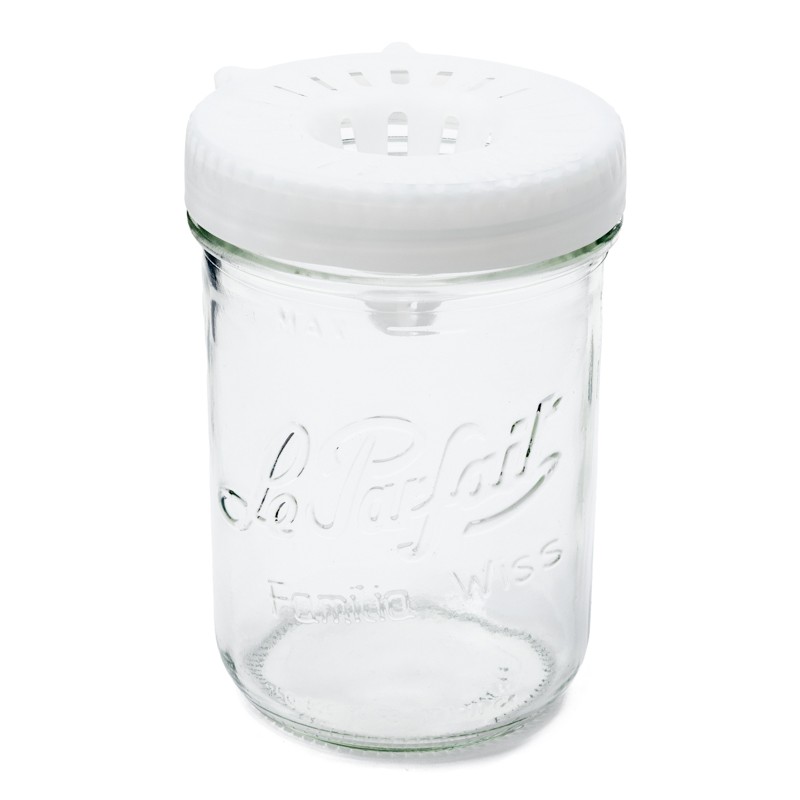











The Ornetin® trap is an effective and eco-friendly tool specifically designed to capture Asian hornets (Vespa velutina), an invasive species that poses a threat to bees and other pollinators.
This kit includes everything you need to get started: an Ornetin® trap with a threaded attachment and an 825 ml Le Parfait glass jar with a wide 100 mm mouth, which maximizes capture surface and makes cleaning and reuse easy.
Ornetin® is a highly selective trap that captures only Asian hornets, avoiding accidental capture of other beneficial insects like bees and butterflies. This selective design is essential for protecting biodiversity, allowing effective control of this invasive species without harming the local ecosystem.
How do you use the trap, and with what product?
The Ornetin® trap is easy to set up and does not require fermented liquids that often attract other insects. To specifically attract Asian hornets, you only need two tablespoons of beet syrup or sugar syrup, poured over an absorbent material (straw, cotton, or paper) inside the included glass jar. This dry bait attracts the hornets without accidentally trapping other species. Place the bait in the jar, screw the trap onto the jar mouth, and position the trap in an area with hornet activity.
What makes it different from other traps?
Unlike conventional bottle or liquid traps, Ornetin® is a selective trap that operates dry, avoiding the use of fermented baits that can attract a wide range of unwanted insects. Ornetin®’s wide openings allow non-target insects to escape easily, preserving local biodiversity. Additionally, the Le Parfait glass jar is durable and reusable: if you need to replace it, you can easily find this jar model separately as it is common and long-lasting.
When should you set up the traps?
It’s recommended to set up Ornetin® traps in early spring (February to April), when Asian hornet queens come out of diapause and start looking for nesting sites. Capturing queens during this early phase helps prevent the formation of new colonies. It is also beneficial to keep the traps in place during warmer months, especially in summer and fall when worker hornets are actively hunting bees to feed their larvae. Check the traps weekly to ensure effectiveness and refresh the bait as needed.
Where should the traps be placed?
Place the traps near apiaries or in areas where you observe Asian hornet activity, such as around beehives. Positioning them 2-3 meters from the hives can help divert hornet attention and reduce pressure on your bees. In larger areas, distributing several traps can enhance control effectiveness.
Advantages of the Ornetin® trap:
• Includes Compatible Glass Jar
This kit includes an 825 ml Le Parfait glass jar, ideal for use with Ornetin®. If you need a replacement, this type of jar is widely available and easy to find as a common, durable model.
• Selective and Eco-Friendly Design
Ornetin® captures only Asian hornets, avoiding accidental capture of bees and butterflies. Its design allows non-target insects to escape easily, protecting the biodiversity of your environment.
• Dry Operation
Thanks to its dry operation, Ornetin® avoids the use of fermented liquids and reduces the risk of trapping unwanted insects. This method is more specific to Asian hornets and easier to maintain.
• Easy Installation and Maintenance
Simply screw the trap onto the included glass jar, add the dry bait, and place the trap in strategic high-activity hornet areas. The jar is washable and reusable, offering a low and long-lasting operational cost.
• Long-Term Cost Efficiency
Ornetin® is a robust trap that you can use for multiple seasons without frequent replacements. With low-cost bait and easy maintenance, this tool is an economical and sustainable investment for any beekeeper.
Ornetin® is an effective and eco-friendly solution to reduce the pressure of Asian hornets on your hives and protect biodiversity. This trap allows you to efficiently manage this threat without compromising the ecosystem’s balance.
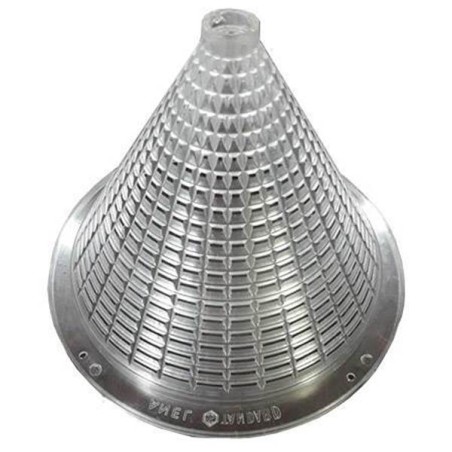
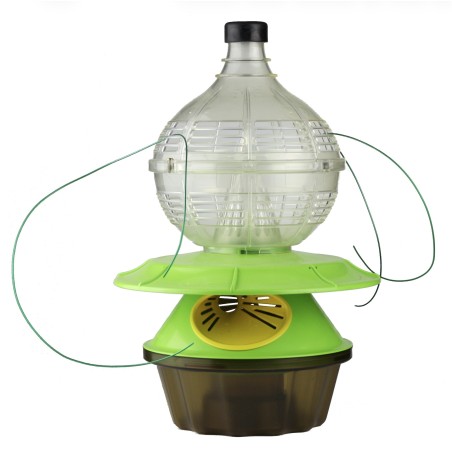

The Ornetin® trap is an effective and eco-friendly tool specifically designed to capture Asian hornets (Vespa velutina), an invasive species that poses a threat to bees and other pollinators.
This kit includes everything you need to get started: an Ornetin® trap with a threaded attachment and an 825 ml Le Parfait glass jar with a wide 100 mm mouth, which maximizes capture surface and makes cleaning and reuse easy.
Ornetin® is a highly selective trap that captures only Asian hornets, avoiding accidental capture of other beneficial insects like bees and butterflies. This selective design is essential for protecting biodiversity, allowing effective control of this invasive species without harming the local ecosystem.
check_circle
check_circle

